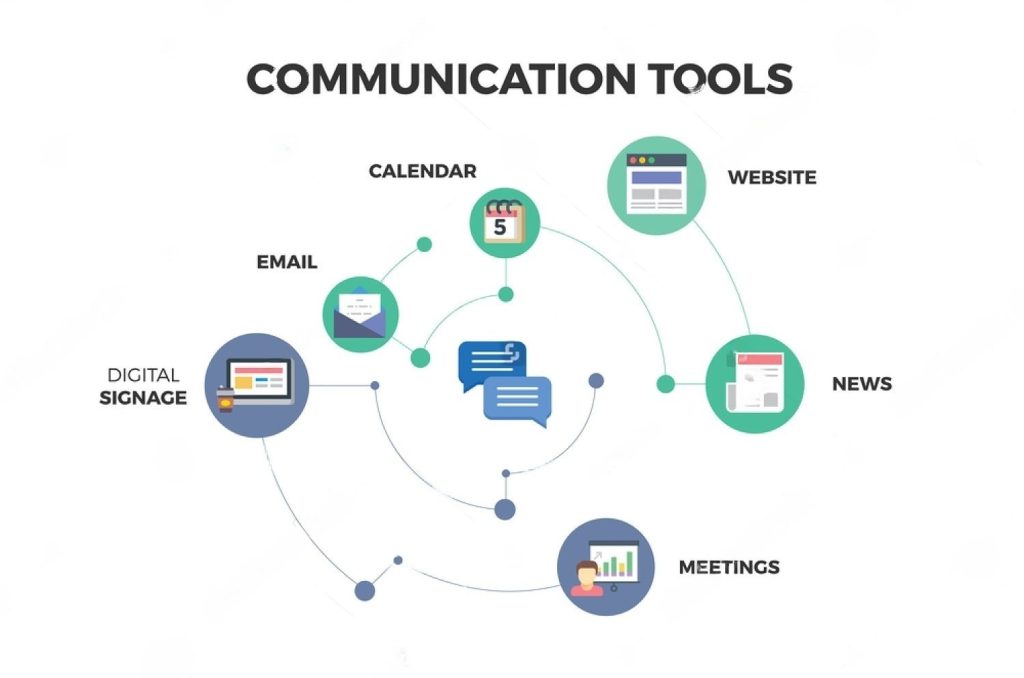Secure Communication in the Classroom: Tools for Teachers and Students
In today’s digital age, teachers have access to a wide array of technological resources that facilitate engaging classes, streamline processes, and support students’ diverse learning needs. Over 65% of educators incorporate digital learning tools into their daily lessons, leveraging apps, platforms, and software suitable for virtual, hybrid, or traditional classroom settings. As digital literacy continues […]

secure communication in the classroom tools for teachers and students
In today’s digital age, teachers have access to a wide array of technological resources that facilitate engaging classes, streamline processes, and support students’ diverse learning needs. Over 65% of educators incorporate digital learning tools into their daily lessons, leveraging apps, platforms, and software suitable for virtual, hybrid, or traditional classroom settings. As digital literacy continues to rise among young learners, these tools further enhance students’ abilities, provide innovative ways to work, and offer access to new experiences.
The Importance of Secure Communication in Education
Secure communication has become a critical aspect of classroom management and student privacy. With the increasing use of online platforms and digital tools in education, protecting sensitive data and ensuring confidentiality is paramount. A recent report by the National Survey of Student Engagement (NSSE) in 2021 highlighted that students attending in-person classes felt their instructors were more responsive compared to those in remote or hybrid formats, who faced more mental health issues.
To address these concerns and enhance the learning experience, educational institutions are integrating advanced technologies to promote student engagement and drive success. Tools like Email Checker API help verify student email addresses, ensuring that communication reaches the intended recipients securely. Additionally, platforms like Rocket. Chat offer secure access and communication within digital classrooms, fostering interactive and collaborative learning among students and teachers.
Secure communication not only safeguards student privacy but also enables personalized learning experiences. Digital tools and adaptive learning platforms analyze student performance data, providing customized recommendations and transparent progress tracking. This data-driven approach allows teachers to tailor their teaching methods to individual student needs, leading to improved learning outcomes. Research indicates that 97 % of students found gamified simulations more engaging, as demonstrated in a study at Archbishop Williams High School and the Technical University of Denmark.
Moreover, effective communication tools can increase parental involvement, with studies showing that high parental engagement can lead to a 17 % increase in student performance. Schools using communication tools report a 12 % increase in student engagement levels, positively impacting learning outcomes. By leveraging these tools, educational institutions can enhance administrative efficiency, reducing tasks by up to 25 % and allowing staff to focus more on educational activities. This not only improves the quality of education but also results in cost savings of 20-30 % related to paperwork, time management, and resource allocation.
As educational institutions embrace digital communication, it is crucial to prioritize data protection measures. Implementing multi-factor authentication, encryption, and regular security audits helps safeguard sensitive information and maintain trust between teachers, students, and parents.
Essential Classroom Technology Tools for Secure Communication
Several classroom technology tools facilitate secure communication between teachers and students. Video conferencing platforms like Zoom and Google Meet offer encrypted meetings and webinars, ensuring that only authorized participants can access the sessions. These tools have become indispensable for remote learning and virtual collaboration.
Learning management systems (LMS) such as Google Classroom and Canvas provide a centralized platform for assigning tasks, grading, and communication while maintaining data privacy. These systems allow teachers to seamlessly organize and distribute course materials, track student progress, and provide timely feedback. Additionally, LMS platforms often integrate with other educational tools, enhancing the overall learning experience.
Encrypted messaging apps like Signal and WhatsApp allow for secure one-on-one or group conversations, protecting sensitive information from unauthorized access. These apps are particularly useful for quick, informal communication between teachers and students or among classmates working on group projects.
Tools like Seesaw and ClassDojo offer secure communication features tailored for elementary school teachers, allowing them to connect with students and parents efficiently. These platforms provide a safe space for sharing student work, sending updates, and facilitating parent-teacher communication.
Interactive notebooks can also be utilized to enhance engagement and collaboration in both digital and physical classrooms.
- Choose video conferencing platforms with end-to-end encryption
- Utilize learning management systems that prioritize data privacy
- Implement encrypted messaging apps for secure communication
- Leverage tools tailored for elementary school teachers and students
- Validate student email addresses using the Email Checker API
Conclusion
As digital education becomes increasingly prevalent, prioritizing secure communication and crafting a safe learning environment is paramount. By strategically integrating technology tools into the classroom, educators can unlock new possibilities for engaging and effective instruction. Moving forward, educational institutions must collaborate to ensure a secure learning environment that protects student data while maximizing the benefits of technology integration. By equipping teachers with the tools and knowledge to leverage technology effectively, we can create dynamic, personalized learning experiences that transcend the boundaries of the traditional classroom.
